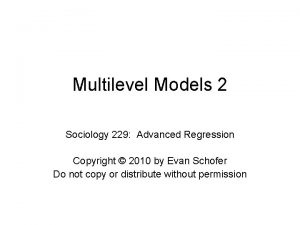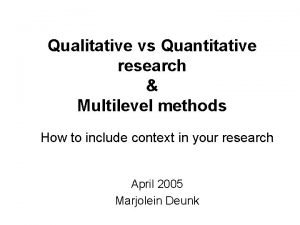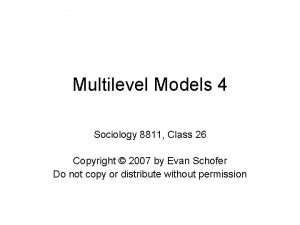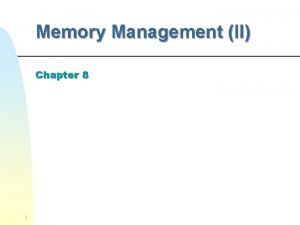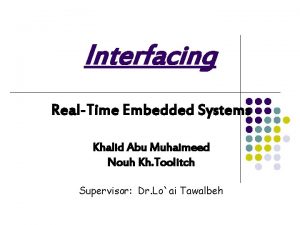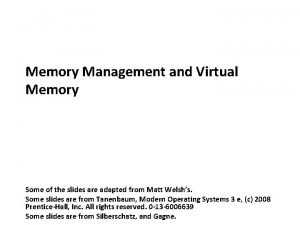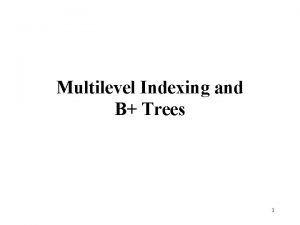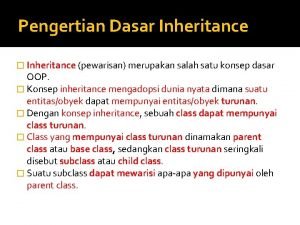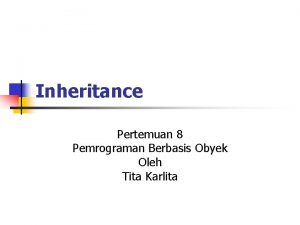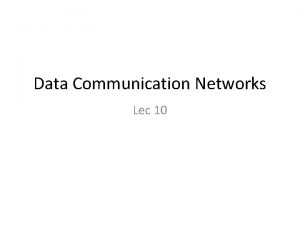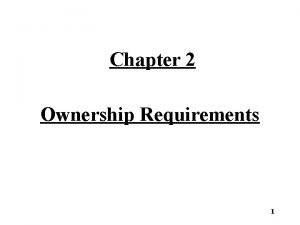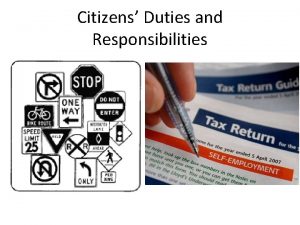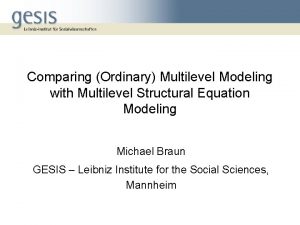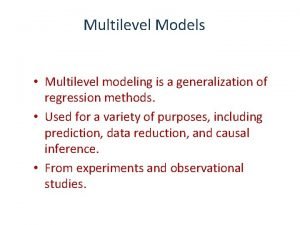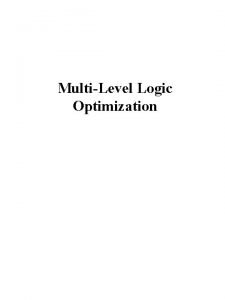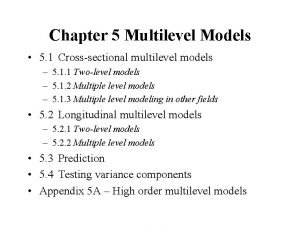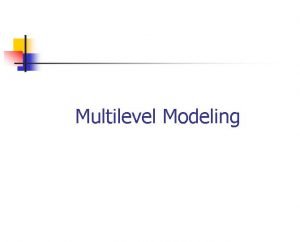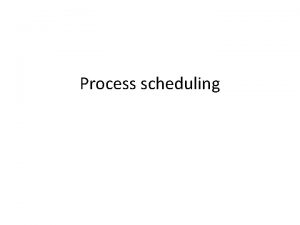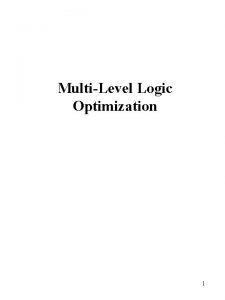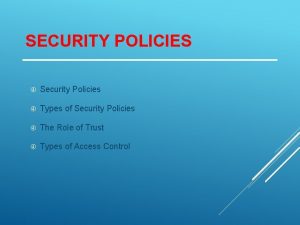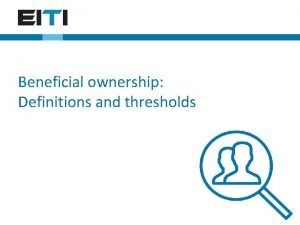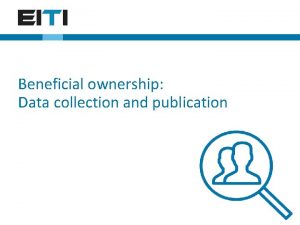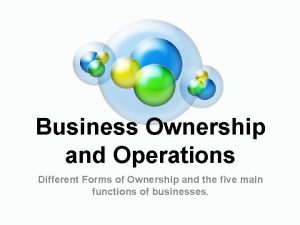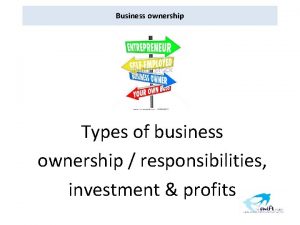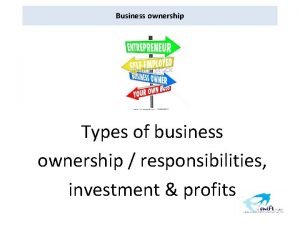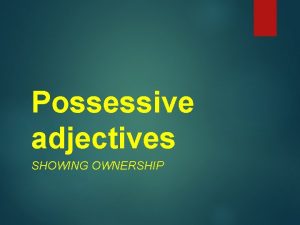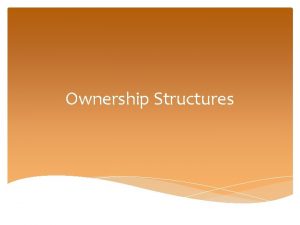Citizens ownership and Multilevel Policies for an Energy

























- Slides: 25

Citizens ownership, and Multilevel Policies for an Energy Transition to 100% Renewable Energy Systems Frede Hvelplund Department of Planning Aalborg University hvelplund@plan. aau. dk Workshop on Local Communities and Social Innovation for the Energy Transition Organised by the European Commission-Joint Research Centre. Ispra, Lago Maggiore, Italy 22 -23 November 2018

1. Consumer ownership gives: Economic space for the green transition

Historically there has been consumer and municipality ownership of heat and electricity production in Denmark 1. 60% of the heat market is district heating, and owned by consumers and municipalities. 2. The whole direct electricity supply system historically has been consumer and municipality owned. (In around 2004 the large power plants were sold to the state owned companies DONG and Vattenfall. And Copenhagen (District System Operator) was sold to DONG. )

Consumer ownership in the context of openness of information and a non profit public regulation 1. A consumer/municipality ownership system combined with a non profit public regulation gives a ”consumer profit” system with ”innovation for low prices” (and consumer values). 2. These low prices have given (and can give) economical ”space” for policies with consumer financed subsidies to green technologies. 3. This made comparatively early introduction of renewable energy economically possible in Denmark concurrently with comparatively low electricity prices.

EU electrcity prices for small companies (2017) EU average Denmark Reference: http: //ec. europa. eu/eurostat/tgm/map. Tool. Closed. do? tab=map&init=1&plugin=1&language=en&pcode=ten 00117 &toolbox=types

2. The four dimensions of (electricity system) Governance Systems.

Citizens ownership in a context Not in the text books Openness of Information! Further reading: ”The Case of the Missing Organizations: Cooperative and the Textbooks. ” Roderick Hill in The Journal of Economic Education. Vol. 31, No. 3 page 281 -295) Non profit-or ”consumer profit” regulation

One example: DSO-NRGI election procedures 210. 000 Consumers/members 100 Consumer representatives They elect 9 board members https: //nrgi-valg. dk/kandidater/

NRGI Sustainable projects https: //nrgiinfo. dk/nrgiinfo/baeredygtighed/ba eredygtig-udvikling/

Consumer ownership, distribution companies and green energy 1. The surplus from the governmental set cost cieling minus costs, ist used for green purposes such as green cities, wind power projects, green trafic, etc. 2. But the projects are mainly within the electricity sector, and does not sufficiently deal with the establishment of integrated smart energy systems. Therefore we need new policies for the integration of fluctuating renewable energy.

3. Citizens ownership and the transition to a 100% renewable smart energy system

The Paradigmatic change 1. From stored fossil fuels to fluctuating renewable energy. 2. As a consequence: From sector based fossil fuel systems to integrated smart energy systems based on renewable energy and energy conservation.

Value added change in a transition from fossil fuel system to renewable energy/conservation energy system Transition From fossil fuel stored to integrated smart energy systems

2015 - 2050 wind power 50%-100% (Green means large consumer ownership share. Black means distant ownership) In-active components Active components Heat Consumption Electricity “Basic” electricity Consumption Renewable energy (Photovoltaic, household wind, etc. ) Central power plants and cogeneration 50% heat conservation Decentral producers Wind Heat/cooling pumps Water storage Increased distant ownership El and SG for transportation etc. Wind – syngas? www. planogmiljo. dk

INTEGRATION INFRASTRUCTURE TECHNOLOGIES 1. 2. 3. 4. 5. 6. 7. 8. Base: A consumer and municipality owned district heating infrastructure. Low temperature district heating. Wind power for district heating in combination with heat pumps and hot water storage. Geothermal energy Solar energy for heat (and cooling) in combination with season storage systems. Low temperature industrial heat. Wind to gas systems. Wind- and solar based electricity transportation infrastructure 9. Optimal (40%) and in time (to avoid overinvestment in supply side) heat conservation measures.

4. Who should own the 100% renewable energy smart energy system?

All these technologies (in most cases) are much closer to the consumers than the coal mines– shipping systemsand central power plants they replace. So we are dealing with a transition from consumer distant to consumer near technologies and value-added.

Local citizens/consumer/municipality companies have lower integration transaction costs than distant owners. - The change from distant coal extraction and large coal fired power plants to consumer near energy sector integration requires coordination and collaboration between owners of wind turbines, the TSO (Transmission Supply Operator), district heating companies, power distribution companies, and the municipalities and the central legislative authorities. - This coordination is much more multifaceted than “just to” to import and burn coal, and require new organizational models that can develop, implement, coordinate and manage these many transaction activities in integrated energy systems both with regard to long term investments and day to day management. It is difficult to handle this high degree of complexity from a distance. - It therefore is a valid hypothesis that the complex co-ordination and integration tasks both at the investment and operation and management level in smart energy systems may have lower transaction costs in a decentralized citizen-/consumer-/municipality ownership model than in a centralized distant ownership model.

5. Policies for local ownership of the smart energy systems Energy system integration between electricity-, heat- transportation and energy conservation.

Regulation for both renewable energy and the integration infrastructure Public regulation 1 Public regulation 2

Some reasons for a large local ownership share a. Keeps integration transaction costs low by making the present owners of the integration infrastructure (district heat companies , heat consumers, etc) own a majority share of RE plants. b. Keeps heat and electricity prices low as it is a traditional consumer profit model. (Historical experience/learning) c. Gives increased incomes in windy areas, which are often hinterland areas with high unemployment rates and low incomes d. Reduces local and regional resistance to wind power, and thus reduces project transaction cost. e. Lowers transaction costs linked to coordination of investments (and O&M) in heat conservation and heat supply.

Reasons behind an EU energy subsidiarity principle 1. Integration of fluctuating Renewable Energy Sources should – due to the complicated coordination task-be placed as close to the energy consumers as socio-economic feasible/possible. 2. Transmission lines (interconnectors) should be supplements to local integration and only be build after implementing economically feasible local and regional smart energy system integration of fluctuating renewable energy. 3. Today there are EU subsidies to interconnectors but not to the local and regional integration infrastructure. ) 4. Ownership and management of smart energy systems should- due to the complicated coordination tasks be placed as close to the consumers as socio-economic feasible/practical possible.

Suggestions for EU policies 1. Implementation of an energy subsidiarity principle. 2. Same level of subsidies to local and regional integration as at present to interconnectors. 3. Clear EU acceptance of policies that supports local and regional ownership of majority shares of renewable energy systems.

Policy suggestions for a transition to 100% RE and citizens ownership 1. 2. 3. 4. 5. 6. 7. 8. Taxes that furthers integration of fluctuating Renewable Energy. Expansion of low temperature 4 th generation district heating A systematic heat conservation policy that aims at an optimal (40% in DK) and in time reduction of heat consumption in 2050. A requirement of at least 51% local and consumer ownership of wind power (onshore) in plant lifetime. At least 51 % co-operative ownership of offshore plants in their lifetime. Requirement of around 30% of plant surplus to a foundation for local and regional environmental purposes. Wind turbines ownership preference should be given to actors having invested in wind power integration. For instant district heating companies. The role of the large power companies could be to engage in an ownership collaboration with local consumers and municipalities.

Thanks!
 Citizens energy group
Citizens energy group Advanced regression models
Advanced regression models Energy energy transfer and general energy analysis
Energy energy transfer and general energy analysis Energy energy transfer and general energy analysis
Energy energy transfer and general energy analysis Multi level page table
Multi level page table Teaching multilevel esl classes
Teaching multilevel esl classes Multilevel feedback queue scheduling example
Multilevel feedback queue scheduling example Multilevel model equation example
Multilevel model equation example Multilevel model equation example
Multilevel model equation example Multilevel paging in os
Multilevel paging in os Interfacing in embedded systems
Interfacing in embedded systems Multilevel page tables
Multilevel page tables Multilevel page tables
Multilevel page tables Multilevel modeling spss
Multilevel modeling spss Priority scheduling example
Priority scheduling example Multilevel indexing
Multilevel indexing Miller indices visualizer
Miller indices visualizer Multilevel nand gate
Multilevel nand gate Apa yang dimaksud dengan pewarisan (inhertance) ?
Apa yang dimaksud dengan pewarisan (inhertance) ? Multilevel instruction
Multilevel instruction Contoh multilevel inheritance
Contoh multilevel inheritance Multiplexing and spreading
Multiplexing and spreading Application of multilevel security
Application of multilevel security Multilevel instruction
Multilevel instruction Multilevel scheme in data communication
Multilevel scheme in data communication Bandwidth utilization multiplexing and spreading
Bandwidth utilization multiplexing and spreading

